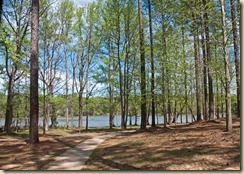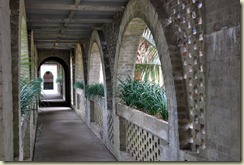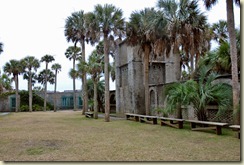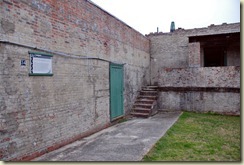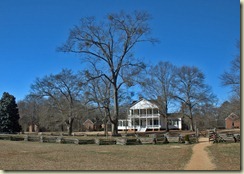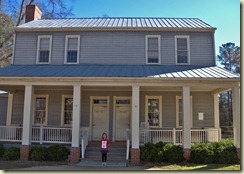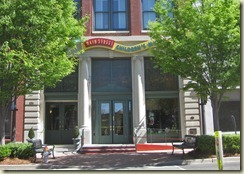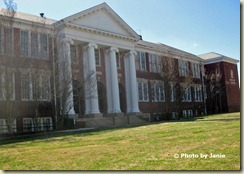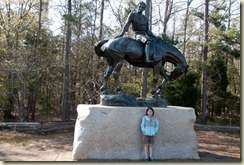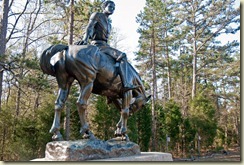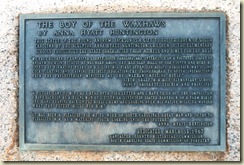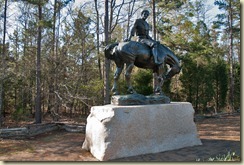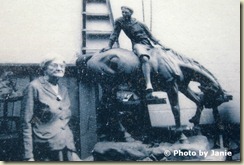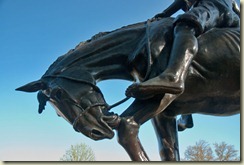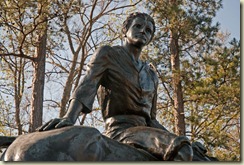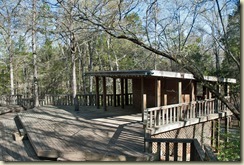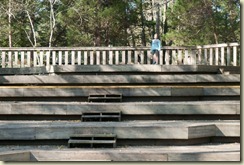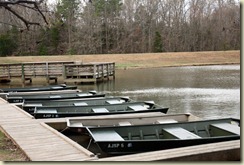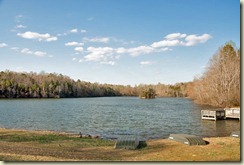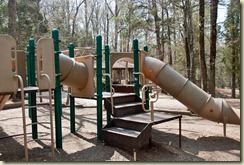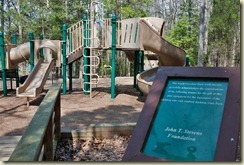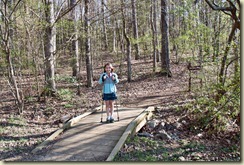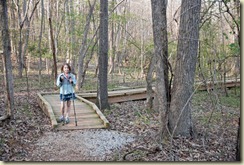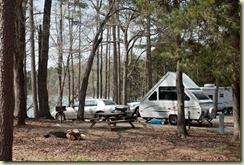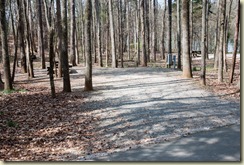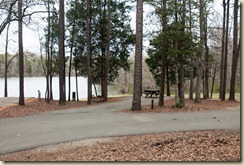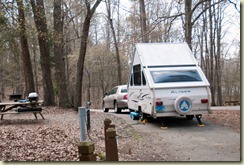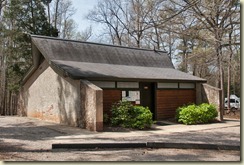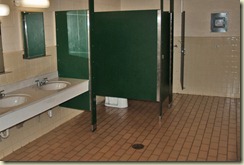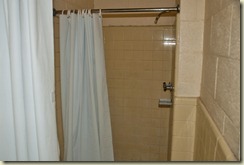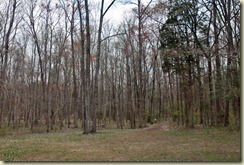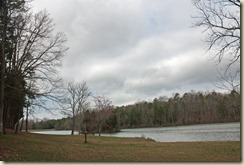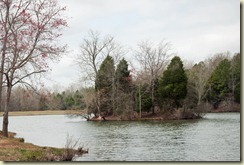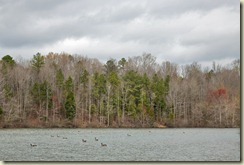Most South Carolinians have seen, or at least heard of, the extremely rare spider lilies that grow along the banks of the Catawba River near Landsford Canal State Park. When they bloom, mid-May to mid-June or so, Park visitors get to see a rare sight indeed. Click here for more information on Landsford Canal’s lilies.
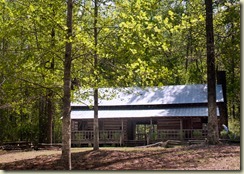 However, as I discovered during a brief visit on April 13th of this year, Landsford Canal State Park offers its visitors much more than spider lilies. And offers those additional features year-round!
However, as I discovered during a brief visit on April 13th of this year, Landsford Canal State Park offers its visitors much more than spider lilies. And offers those additional features year-round!
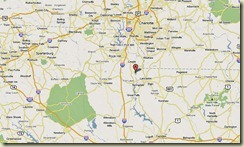 Don’t let that lack of RV camping discourage you, though. Landsford Canal is conveniently located between two terrific RV camping Parks: Andrew Jackson about 16 miles north, and Lake Wateree, about 30 miles south. There’s plenty of information about both Parks on the CarolinaConsidered website. Two of my favorites Parks in the whole State.
Don’t let that lack of RV camping discourage you, though. Landsford Canal is conveniently located between two terrific RV camping Parks: Andrew Jackson about 16 miles north, and Lake Wateree, about 30 miles south. There’s plenty of information about both Parks on the CarolinaConsidered website. Two of my favorites Parks in the whole State.
You can begin to enjoy the Landsford Canal State Park immediately upon turning off Route 21 at the State Park sign. The three miles or so of nicely paved two-lane road takes you through beautiful fields, hedge rows, and farm houses on both sides. Typical South Carolina countryside. For this part of the State, anyway.
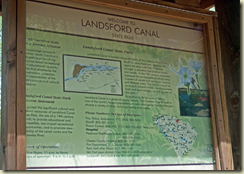 Then, before you know it, you reach the Park’s main gate and the Iron Ranger. Don’t forget to tip the Ranger as you enter. That’s one of the few sources of “revenue” for this Park. And at $2.00 per adult, it’s a bargain.
Then, before you know it, you reach the Park’s main gate and the Iron Ranger. Don’t forget to tip the Ranger as you enter. That’s one of the few sources of “revenue” for this Park. And at $2.00 per adult, it’s a bargain.
I’ve mentioned this before, but South Carolina residents are able to buy Park passes good for a year that provide access to all State Parks for only $50. And that’s only $25 for seniors. They’re available on-line and at many Park offices. So pick yours up and save. Click here for more information.
There’s plenty of parking down toward the River, and, as you can see in the first photo on this page, a nice paved walkway that provides easy wheeled-vehicle access for folks with mobility problems. Good to see.
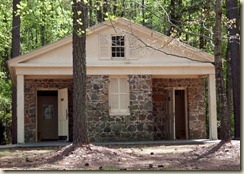 Throughout this Park, or at least in the parts I was able to see, attention has been paid to access for limited mobility folks. Trails are meticulously maintained; ramps are available and well maintained. This photo of the front of one of the stone-built restrooms shows the concrete walkway nicely. And look at that stone work! Be sure to click on the photo to get a larger view.
Throughout this Park, or at least in the parts I was able to see, attention has been paid to access for limited mobility folks. Trails are meticulously maintained; ramps are available and well maintained. This photo of the front of one of the stone-built restrooms shows the concrete walkway nicely. And look at that stone work! Be sure to click on the photo to get a larger view.
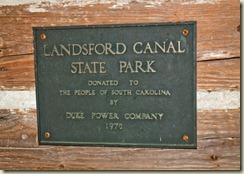 I’ve yet to learn much about the history of this Park. But, according to its website, the Park began with a donation from Duke Power of 194 acres in Chester County. Subsequent additions of 44 acres in 1989 and 210 acres in 1998 combined to make up the current 448 acre total. Now the Park is located in both Chester and Lancaster Counties.
I’ve yet to learn much about the history of this Park. But, according to its website, the Park began with a donation from Duke Power of 194 acres in Chester County. Subsequent additions of 44 acres in 1989 and 210 acres in 1998 combined to make up the current 448 acre total. Now the Park is located in both Chester and Lancaster Counties.
The two-mile long Landsford Canal, for which the Park is named, played an important role in settlement of South Carolina’s upstate region between 1820 and 1840. It was designed to provide easier transport along a difficult portion of the Catawba and Wateree Rivers. I have to learn more about this site. In the meantime, here’s a link to the South Carolina Department of Archives and History that provides more information and photos.
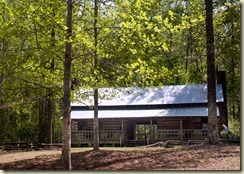 I did get to see the 1790s Simpson-Wise log house that was disassembled and relocated here, piece by numbered piece, from its original site near the Town of Chester, South Carolina. You may recall our visit to an earlier [mid-18th century] log house now at Sesquicentennial State Park. [click the link to refresh your memory].
I did get to see the 1790s Simpson-Wise log house that was disassembled and relocated here, piece by numbered piece, from its original site near the Town of Chester, South Carolina. You may recall our visit to an earlier [mid-18th century] log house now at Sesquicentennial State Park. [click the link to refresh your memory].
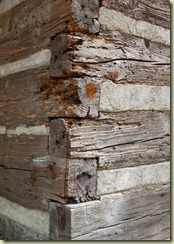 This log house was disassembled, moved, and then reconstructed here during 1979 and 1980 by Park personnel. Park budget at that time didn’t allow for the support of outside specialists. But the building was reconstructed here nonetheless. According to Park records, nearly all of the original logs were saved and used in the current building. Though roofing and flooring board had to be replaced.
This log house was disassembled, moved, and then reconstructed here during 1979 and 1980 by Park personnel. Park budget at that time didn’t allow for the support of outside specialists. But the building was reconstructed here nonetheless. According to Park records, nearly all of the original logs were saved and used in the current building. Though roofing and flooring board had to be replaced.
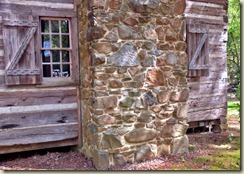 Stonework too, of course, was done at the time of reconstruction. Here’s an example of that work on the outside of the main chimney. Wish I could have seen the stone mason at work!
Stonework too, of course, was done at the time of reconstruction. Here’s an example of that work on the outside of the main chimney. Wish I could have seen the stone mason at work!
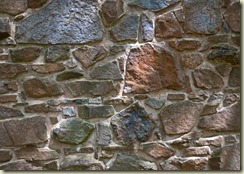 Here’s a closer look at the chimney stonework. Every square foot that I saw, inside and out, was of this remarkable craftsmanship. Imagine being able to do work like this!
Here’s a closer look at the chimney stonework. Every square foot that I saw, inside and out, was of this remarkable craftsmanship. Imagine being able to do work like this!
 There’s plenty more to see and learn here at Landsford Canal State Park. I’m hoping to visit again during my next trip to Lake Wateree State Park during the second week of May. Hopefully, just before the lilies bloom and the Park fills with visitors! So stay tuned.
There’s plenty more to see and learn here at Landsford Canal State Park. I’m hoping to visit again during my next trip to Lake Wateree State Park during the second week of May. Hopefully, just before the lilies bloom and the Park fills with visitors! So stay tuned.
